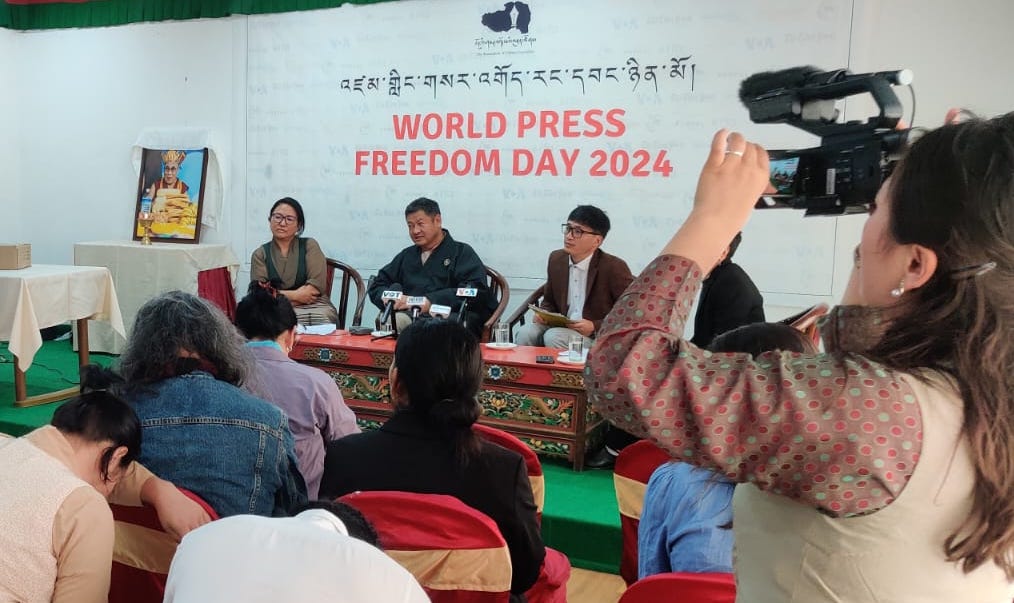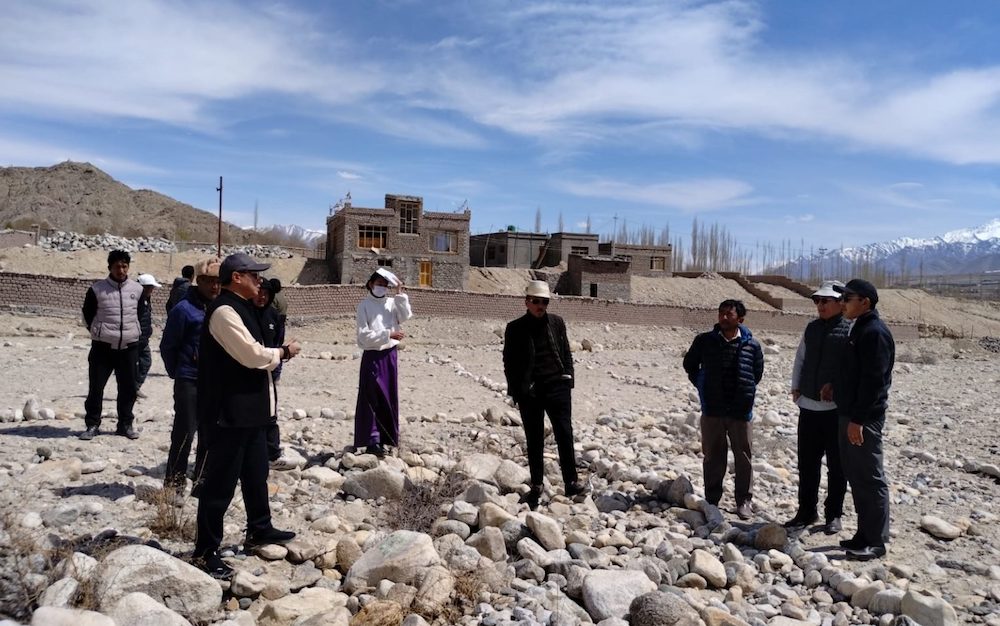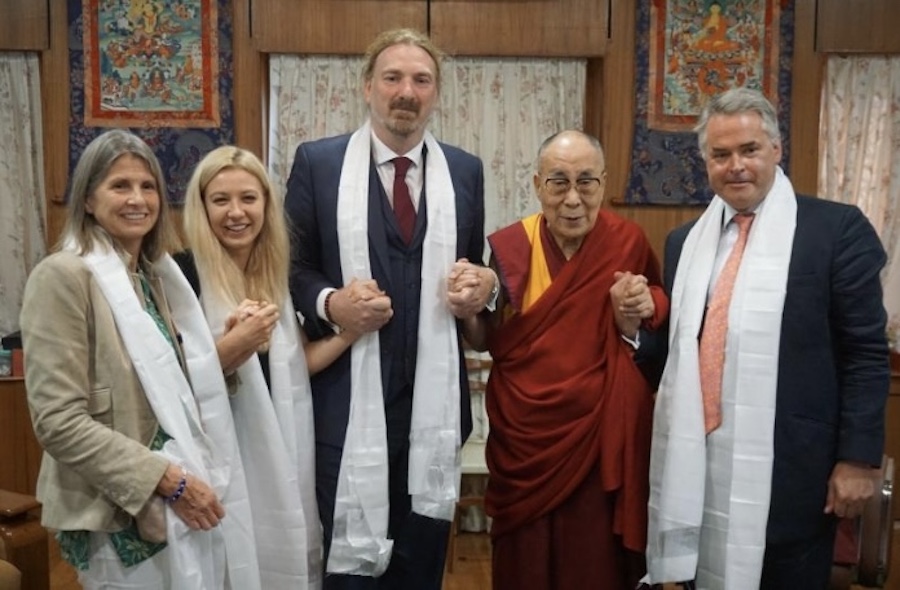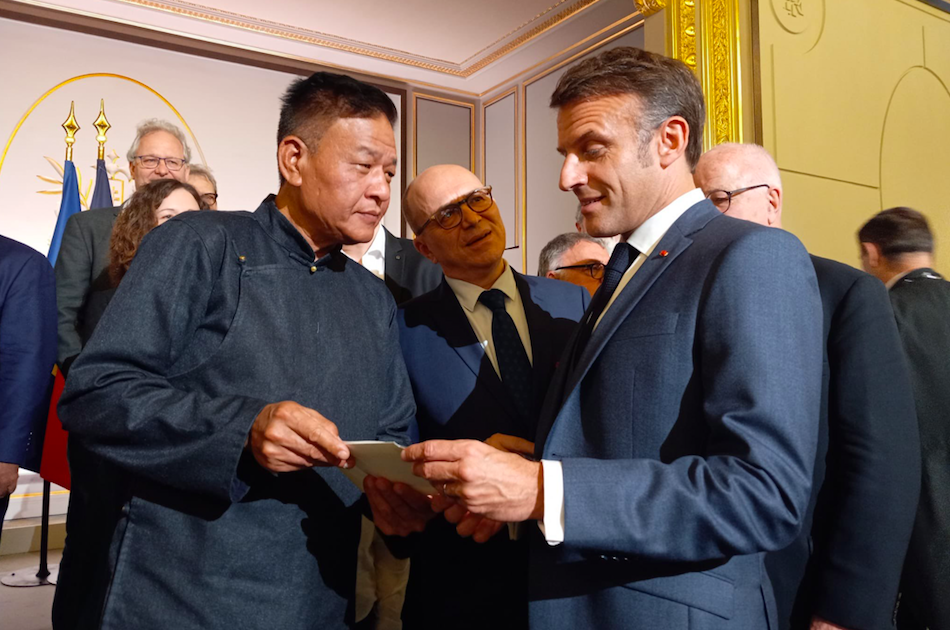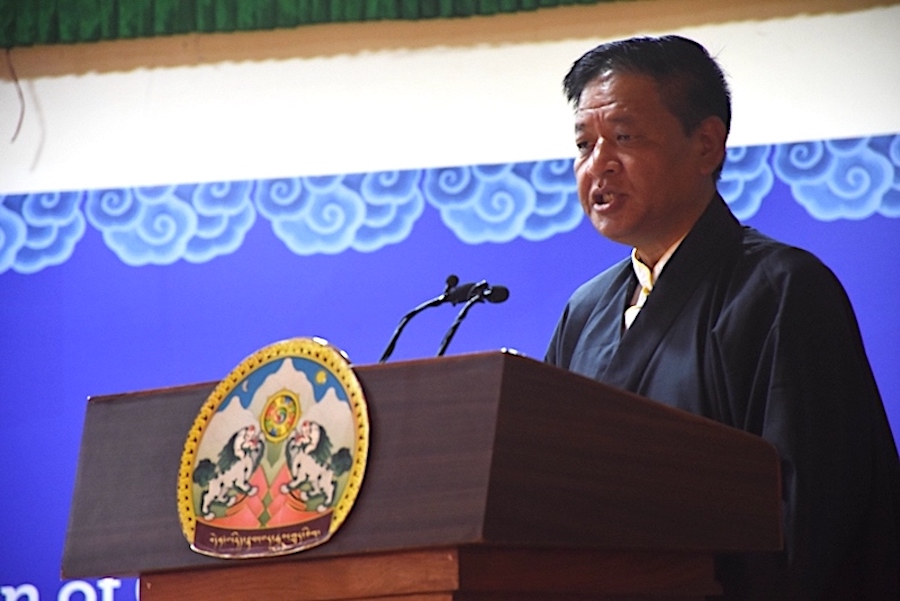A much expected change of leadership is currently taking place in the Tibet Autonomous Region (TAR). According to a report from the official news agency Xinhua, Jampa Phuntsog (Chinese: Qiangba Puncog), who was previously vice-Chairman of the TAR People’s Congress, has become the new Chairman of the TAR regional government. His predecessor, Legchog (Chinese: Lieque), has been appointed Chairman of the TAR People’s Congress. He replaces Ragdi (Chinese: Raidi), the most powerful Tibetan communist leader, who was promoted vice-Chairman of the National People’s Congress (NPC) in Beijing during the Congress’ meeting in March 2003. In early May, Radio Free Asia reported that the TAR Party Secretary Guo Jinlong will shortly be replaced by one of his deputies, Yang Chuantang.
Like many other decisions of the new Central Party General Secretary and head of State, Hu Jintao, these developments primarily demonstrate continuity. They also appear to show a personal concern for Tibetan affairs on the part of the new Chinese leader. Finally, they provide Ragdi with the highest honours and may set the scene for a continuation of the Sino-Tibetan dialog, possibly after the end of the SARS-crisis.
The trip to China and Tibet in September 2002 of the exile Tibetan delegation led by the two envoys of the Dalai Lama, Lodi Gyari and Kelsang Gyaltsen, is known to have generated a certain restiveness among both Chinese and Tibetan cadres working in Tibetan affairs, and raised an array of speculations about the next Tibetan leadership in the TAR. Rumours reported to TIN at the end of 2002 suggested, for instance, a possible promotion of Lhakpa Phuntsog, a relatively popular Tibetan leader, to the post of Party Secretary of the TAR. Others predicted that Ragdi would be transferred to the National People’s Congress (NPC) in Beijing “to become the successor of Ngapoe Ngawang Jigme”. (1) Perhaps the most interesting rumour speculated the imminent return of former Deputy Party Secretary Tenzin (Chinese: Danzeng) to the TAR. Tenzin, a partisan of culturally sensitive development in Tibet and Ragdi’s rival, was transferred to a non-political post in the Chinese Writers’ Association in Beijing in 2001.
Unconfirmed reports said that after a short time in Beijing, he was compensated for his de facto demotion with an unspecified high Party post in Yunnan province. Whereas these speculations predicted the advent of a ‘liberal’ leadership in the TAR as a first step towards a ‘softening’ of China’s Tibet policies, the personnel changes which have now been officially reported provide a very different picture, which neither suggests a coming ‘liberalisation’, nor, as some observers expected, the advent of ‘hard-line’ policies, but rather a routine continuity.
The promotions of Jampa Phuntsog and Legchog are both consistent with existing patterns in the Chinese political regime. Jampa Phuntsog has earned his credentials from years of work at the second level of leadership and his transfer to the highest executive position in the TAR therefore appears logical. After five years of chairmanship of the TAR, Legchog’s appointment to Chairman of the TAR People’s Congress, the constitutionally highest post in the TAR, is obviously a reward for his years of service, and probably his first step into a honourable retirement. At the end of their careers and before their final retirement, Chinese Communist Party and government leaders are often rewarded with high posts in provincial or national People’s Congresses, theoretically the law-making bodies of the State, or in the corresponding consultative bodies (CPPCC). Both Jampa Phuntsog and Legchog have pursued their careers under Ragdi’s leadership and his protection.
The departure of Guo Jinlong from the post of Party Secretary, the most powerful position in the TAR, is slightly more surprising. Guo occupied this position for only about two and a half years, a strikingly short term. However, sources mention that Guo has lately suffered from ill health. Therefore his replacement may not require any political interpretation. Furthermore, Yang Chuantang’s promotion conforms to existing patterns: Guo Jinlong himself succeeded Chen Kuiyuan after serving as one of his deputies. Still, considering that such personnel decisions are taken at the highest Party level, it is important to note that Guo’s successor, Yang Chuantang, is said to be close to the present Central Party General Secretary Hu Jintao. Indeed, Yang was transferred to the TAR during Hu’s tenure there, and he shares the three typical traits of most members of Hu’s personal network: He was a member of the Communist Youth League, he attended the Party school, and he spent most of his career in the inner provinces of China. Through Yang’s promotion, Tibetan affairs appear to have been brought more closely under Hu Jintao’s personal supervision.
The link between the Tibetan regions and Hu Jintao is well known. Hu was Party Secretary in the TAR between 1988 and 1993, and he occupied important Party posts in Gansu province in the past. It seems significant that earlier this year Hu chose to remain deputy for the TAR in the National People’s Congress despite the fact that his new position of General Secretary of the Chinese Communist Party would have enabled him to represent more prestigious regions in the East. The first Politburo meeting chaired by Hu Jintao after the 16th Party Congress was dedicated to the Western development drive. (2)
As an Executive Deputy Party Secretary, Ragdi was also a potential candidate for the post of TAR Party Secretary. His selection for this position would also have represented the first appointment ever of a Tibetan to supreme political authority in the TAR, which would have had a valuable propaganda effect. More than any other Tibetan communist leader, Ragdi has understood how to gain the trust of Chinese leaders, among them Hu Jintao, through serving them truthfully and implementing repressive policies. That Ragdi did not become Party Secretary indicates, though, seems to indicate the limit of this trust and shows once more the existence of a “glass ceiling” separating Tibetan leaders from a position apparently reserved for Chinese. It could, also indicate that the Central Party authorities do not wish any Tibetan leader to become too powerful. Ragdi heads a network of Tibetan clients and protégés in politics and business which holds the local society in a tight grasp. Over the years, Ragdi has become the mightiest Tibetan politician since the inception of Chinese power in Tibet.
Ragdi’s departure from his post as Party Executive Deputy Secretary of TAR has not been officially announced yet, but sources suggest that Jampa Phuntsog may take up this post as well as that of Chairman of the TAR regional government, which would make him Ragdi’s fully fledged successor in the TAR. However, the central Party may still choose to set other accents and nominate a further candidate. Although Tibetan leaders normally prefer to stay in Tibet rather than move to the Chinese lowland, Ragdi is known to suffer from a cardio-vascular condition called in Chinese duo xue zheng which makes his stay at high altitude difficult. The symptoms are said to diminish at lower altitude and Ragdi is likely to gain physical relief by moving to Beijing.
Although Ragdi’s participation in the actual exercise of power in the TAR and his ascension within the Party hierarchy seem to have come to an end, his promotion to vice-chairman of the NPC in fact represents the crowning of his career, a high honour, rewarding him with prestige and privileges for his life-long loyalty. According to China’s constitution, the NPC is the highest organ of the State. The chairman and the vice-chairman of the NPC and the CPPCC, and the members of the State Council, are therefore regarded as the leaders of the State. Since the 1950s, the highest Tibetan personalities were made Chairman of the NPC, an act of legitimation which implicitly acknowledged the integration of Tibet within the structure of the PRC. The Dalai Lama, then the Panchen Lama, Ngapoe Ngawang Jigme (see footnote 1), and Phagbala Geleg Namgyal were predecessors of Ragdi in this position. All of them were high lamas or aristocrats and none were party members, (3) and as such they embodied the traditional Tibetan society. Seen from this perspective, Ragdi’s access to the position is unique. Ragdi was born into a poor nomadic family in Nagchu and rose to his current position through an exemplary career within the Party. His bitter criticism of the ‘old society’ is legendary. He therefore embodies at the constitutional pinnacle of the State the ‘new Tibet’ created by China after 1951. This development might indicate a new self-confidence of the regime, but it also bears a strong political symbolism. In his new position, Ragdi is likely to become one of the main counterparts of the next delegation of the Dalai Lama. This will put China in the position of presenting the Tibet question, which is seen by the Tibetans in exile from the perspective of a China vs. Tibet conflict, as a conflict between the ‘old’ and the ‘new’ Tibet, or in other words, a conflict between ‘liberated serfs’ and ‘former serf owners’. This is the perspective claimed by China even before the National People’s Army entered Tibet. Ragdi’s new position appears thus to represent a change in function rather than a mere retirement.
Footnotes:
1. Ngapoe Ngawang Jigme was the Tibetan signatory of the 17 point agreement between Tibet and the PRC in 1951. He and the late Panchen Lama have been the key Tibetan figureheads of the regime and held several representative posts since 1959. However, unlike the Panchen Lama who managed to establish some room for political manoeuvre for himself, Ngapoe never seems to have held any real power.
2. A number of new leaders who belong to Hu Jintao’s personal network and have been nominated to key positions in recent months were previously posted in the TAR and other provinces with Tibetan populations. Tian Conming, for example, was briefly deputy secretary of the TAR Party Committee during Hu Jintao’s tenure. He has been nominated head of the official news agency Xinhua. Also, Zhang Xuesong was First Secretary at the office of the Gansu Party Committee during Hu Jintao’s tenure as Party secretary there. He then acted as Deputy Secretary of the TAR Party Committee under Hu’s leadership. Zhang was recently promoted to Party leader in Sichuan. (Zhang’s predecessor, Zhou Yonkhang was promoted Minister of Public Security in Beijing instead of the Tibetan Dorje Tsering. The Wall Street Journal of 13 March 2003 reports that Zhou had taken a keen interest in the arrest of the Tibetan Lama Tenzin Deleg Rinpoche in Spring 2002. Zhou is a protégé of Zeng Qinhong, the strongest among five of the nine members of the Standing Committee of the Politburo considered to be loyal to out-going Party leader Jiang Zemin, and Hu Jintao’s potential rival)
3. Ngapoe is an exception, his Party membership was held secret for many years, it became accidentally known during the chaos of the culture revolution.





